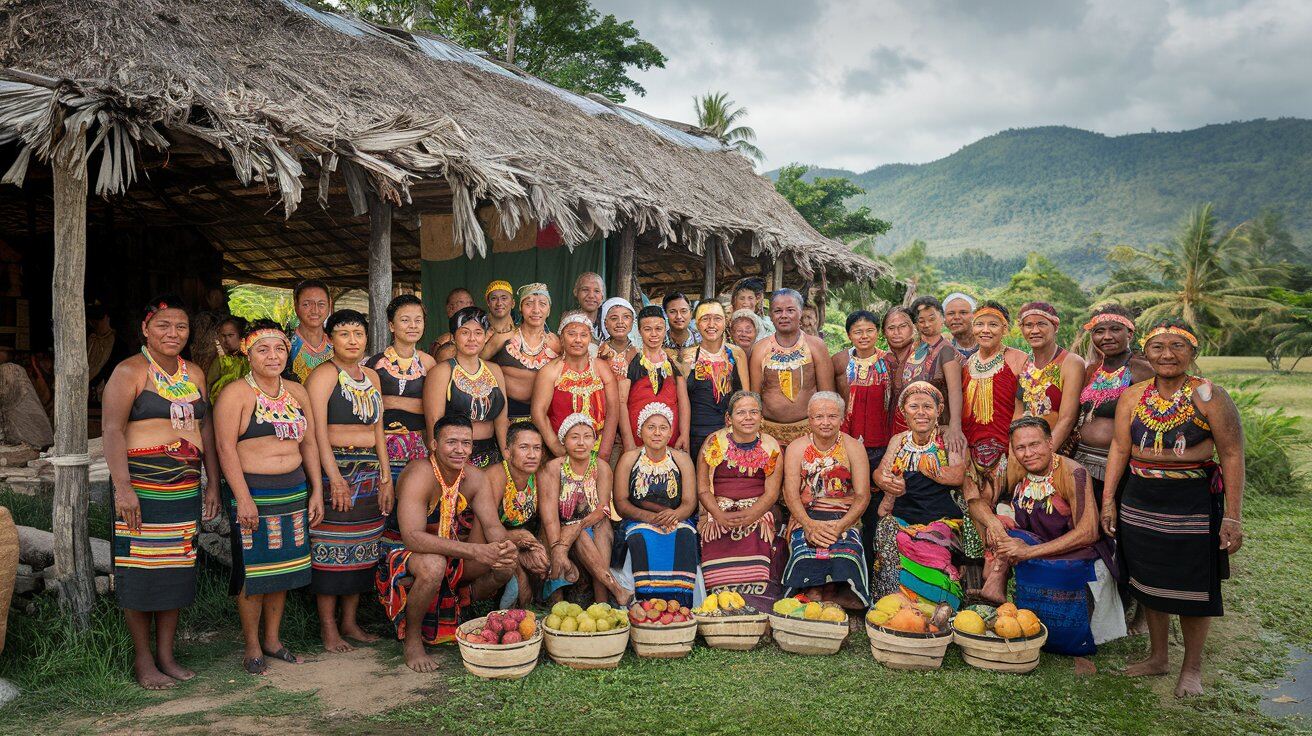
Keresan languages are a fascinating group of indigenous languages spoken by the Keres people in New Mexico. These languages are unique because they don't belong to any known language family. Instead, they form their own distinct group. Keresan is divided into seven dialects, each corresponding to a different pueblo. Despite their differences, these dialects share many similarities, making them mutually intelligible. Sadly, the number of fluent speakers is dwindling, with most being older adults. Efforts are underway to revitalize these languages through educational programs and community initiatives. Learning about Keresan languages offers a glimpse into the rich cultural heritage and history of the Keres people.
What Are Keresan Languages?
Keresan languages are a group of dialects spoken by the Pueblo people in New Mexico. These languages hold a rich cultural significance and are integral to the identity of the Keresan-speaking communities.
- Keresan languages are spoken by the Pueblo people in New Mexico.
- There are seven Keresan-speaking Pueblos: Acoma, Cochiti, Laguna, San Felipe, Santa Ana, Santo Domingo, and Zia.
- Keresan languages are divided into Eastern and Western dialects.
- The Eastern dialects include Cochiti, San Felipe, Santa Ana, and Santo Domingo.
- The Western dialects include Acoma, Laguna, and Zia.
- Keresan languages are part of the larger Keresan language family, which is unique and not related to other language families.
Historical Significance of Keresan Languages
The history of Keresan languages is deeply intertwined with the history of the Pueblo people. These languages have been passed down through generations, preserving the cultural heritage and traditions of the Keresan-speaking communities.
- Keresan languages have been spoken for centuries, with roots tracing back to ancient Pueblo civilizations.
- The Pueblo Revolt of 1680 was a significant event in Keresan history, where Pueblo people, including Keresan speakers, united to resist Spanish colonization.
- Keresan languages have been used in traditional ceremonies, storytelling, and oral history, preserving the cultural heritage of the Pueblo people.
- The Keresan-speaking Pueblos have maintained their languages despite external pressures and influences, showcasing their resilience and cultural pride.
Linguistic Features of Keresan Languages
Keresan languages have unique linguistic features that set them apart from other languages. These features contribute to the richness and complexity of the Keresan linguistic landscape.
- Keresan languages have a complex system of verb conjugation, with different forms for tense, aspect, and mood.
- The languages use a system of noun classification, where nouns are categorized based on their physical characteristics and other attributes.
- Keresan languages have a rich vocabulary for describing the natural world, reflecting the close relationship between the Pueblo people and their environment.
- The languages use a system of honorifics and politeness markers, indicating social relationships and respect within the community.
- Keresan languages have a unique phonetic inventory, with sounds that are not found in many other languages.
Challenges Facing Keresan Languages
Despite their rich cultural and linguistic heritage, Keresan languages face several challenges. These challenges threaten the survival and vitality of the languages, making efforts to preserve and revitalize them crucial.
- Keresan languages are endangered, with a declining number of fluent speakers, particularly among younger generations.
- The influence of English and Spanish has led to language shift and loss, with many Keresan speakers becoming bilingual or monolingual in these dominant languages.
- Limited resources and support for language education and revitalization efforts pose significant challenges for the preservation of Keresan languages.
- The loss of traditional cultural practices and ceremonies, where Keresan languages are used, further threatens the survival of the languages.
- Efforts to document and record Keresan languages are ongoing, but more work is needed to create comprehensive and accessible resources for language learners and speakers.
Efforts to Revitalize Keresan Languages
Despite the challenges, there are ongoing efforts to revitalize and preserve Keresan languages. These efforts aim to ensure the survival of the languages for future generations and to strengthen the cultural identity of the Keresan-speaking communities.
- Community-based language programs and initiatives are being developed to teach Keresan languages to younger generations.
- Language immersion programs and schools have been established in some Keresan-speaking Pueblos to promote language learning and use.
- Elders and fluent speakers play a crucial role in language revitalization efforts, passing down their knowledge and skills to younger community members.
- Technology and digital resources are being used to create language learning materials and to connect speakers and learners.
- Collaborative efforts between Keresan-speaking Pueblos and linguistic researchers are helping to document and analyze the languages, creating valuable resources for language preservation.
- Cultural events and activities, such as traditional dances, storytelling, and ceremonies, are being used to promote the use and transmission of Keresan languages.
- Advocacy and awareness-raising efforts are helping to highlight the importance of Keresan languages and to garner support for their preservation and revitalization.
The Final Word on Keresan Languages
Keresan languages, spoken by the Pueblo people, hold a unique place in linguistic studies. These languages, with their rich oral traditions, offer a glimpse into the culture and history of the Keresan-speaking communities. Despite challenges like declining numbers of native speakers, efforts to preserve and revitalize these languages are ongoing. Schools and community programs play a crucial role in teaching younger generations. Understanding Keresan languages not only enriches our knowledge of human communication but also helps preserve the cultural heritage of the Pueblo people. By supporting these preservation efforts, we contribute to the survival of these fascinating languages. So, next time you hear about Keresan languages, remember their significance and the importance of keeping them alive for future generations.
Was this page helpful?
Our commitment to delivering trustworthy and engaging content is at the heart of what we do. Each fact on our site is contributed by real users like you, bringing a wealth of diverse insights and information. To ensure the highest standards of accuracy and reliability, our dedicated editors meticulously review each submission. This process guarantees that the facts we share are not only fascinating but also credible. Trust in our commitment to quality and authenticity as you explore and learn with us.


